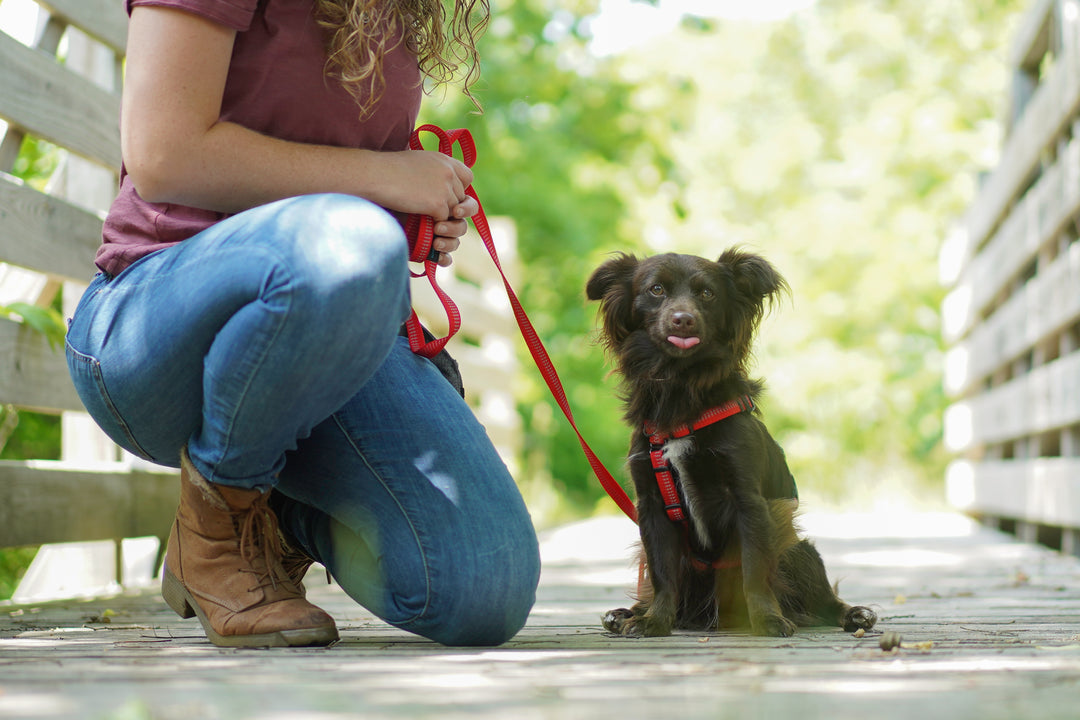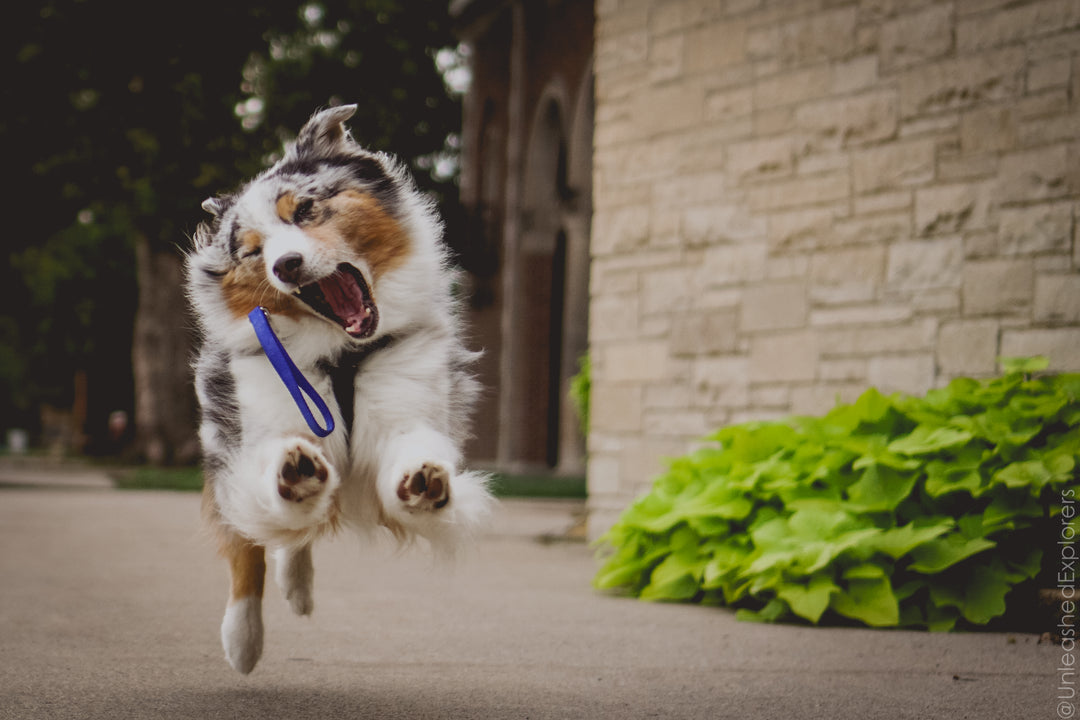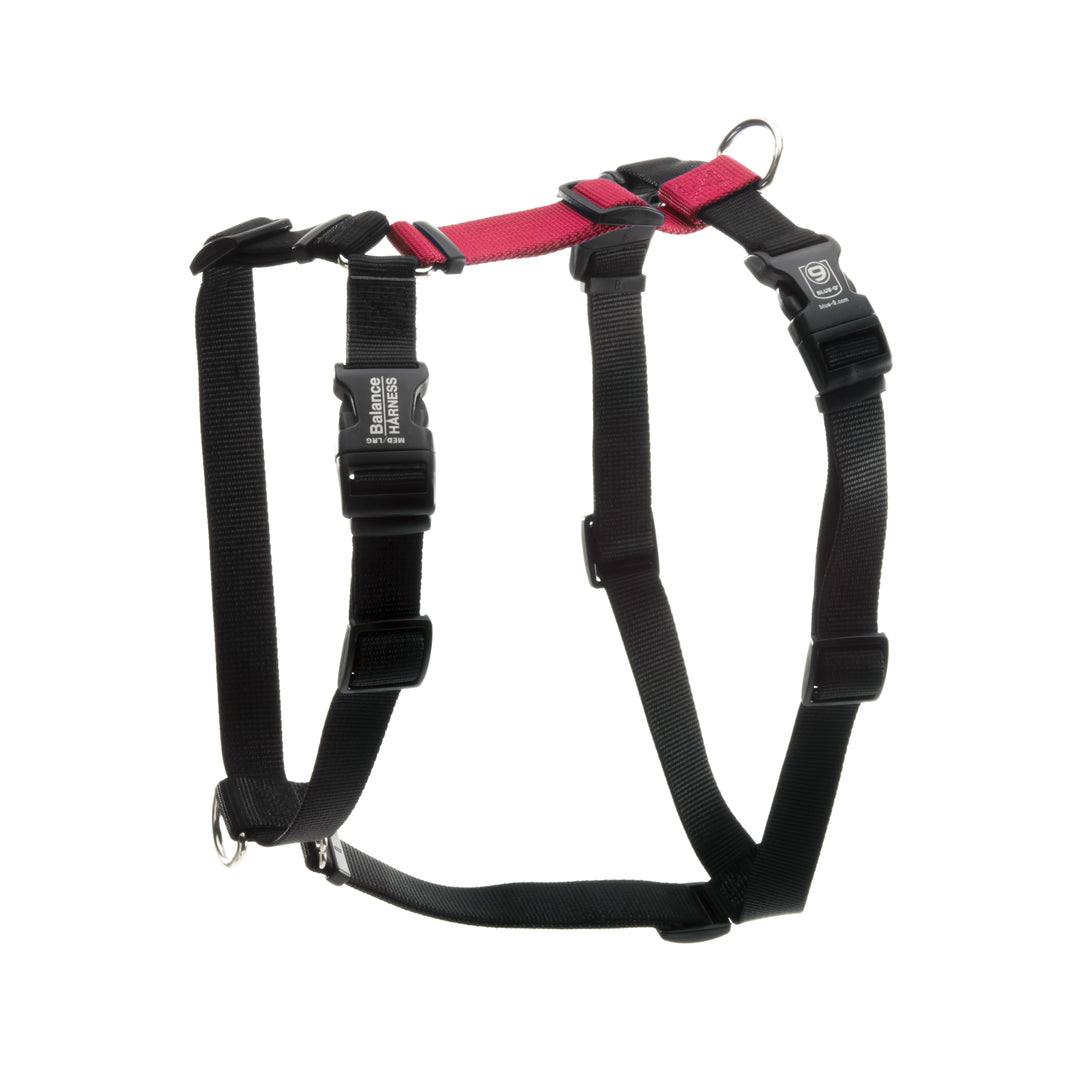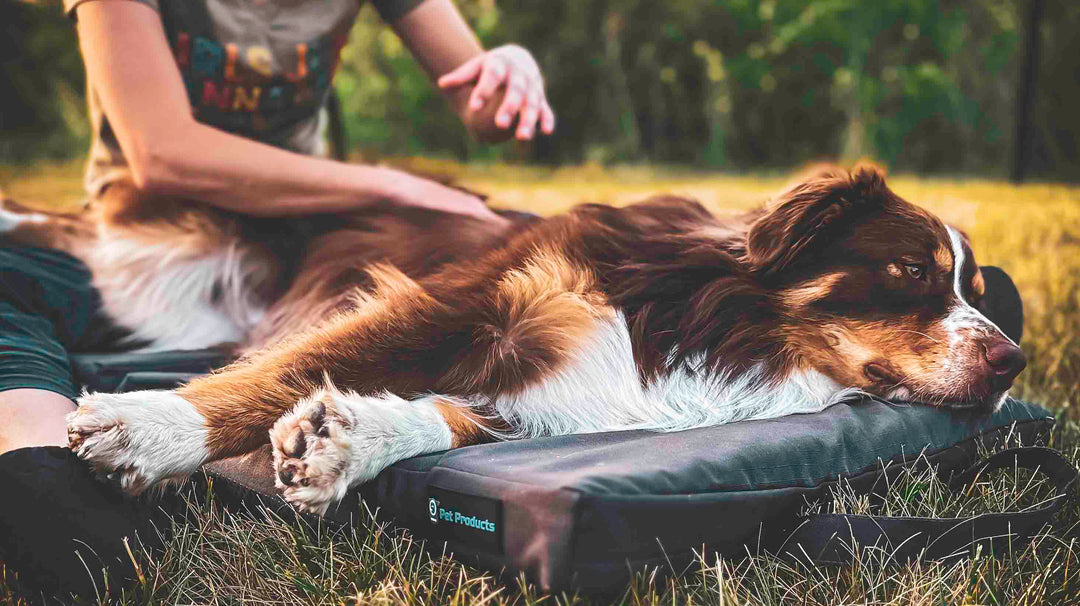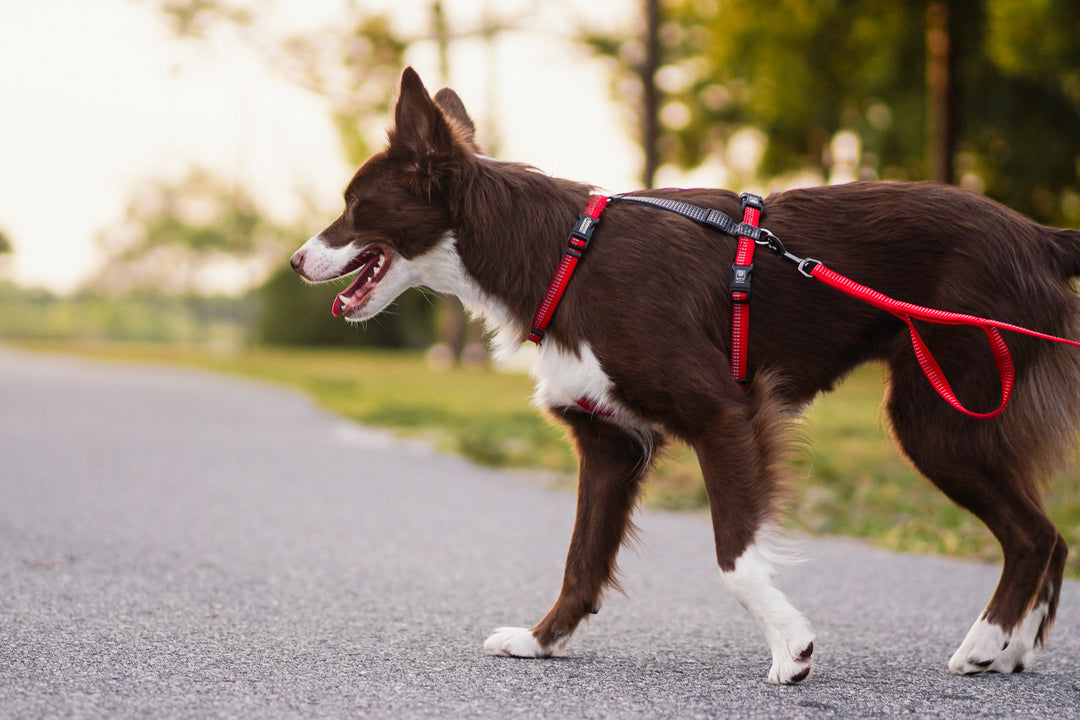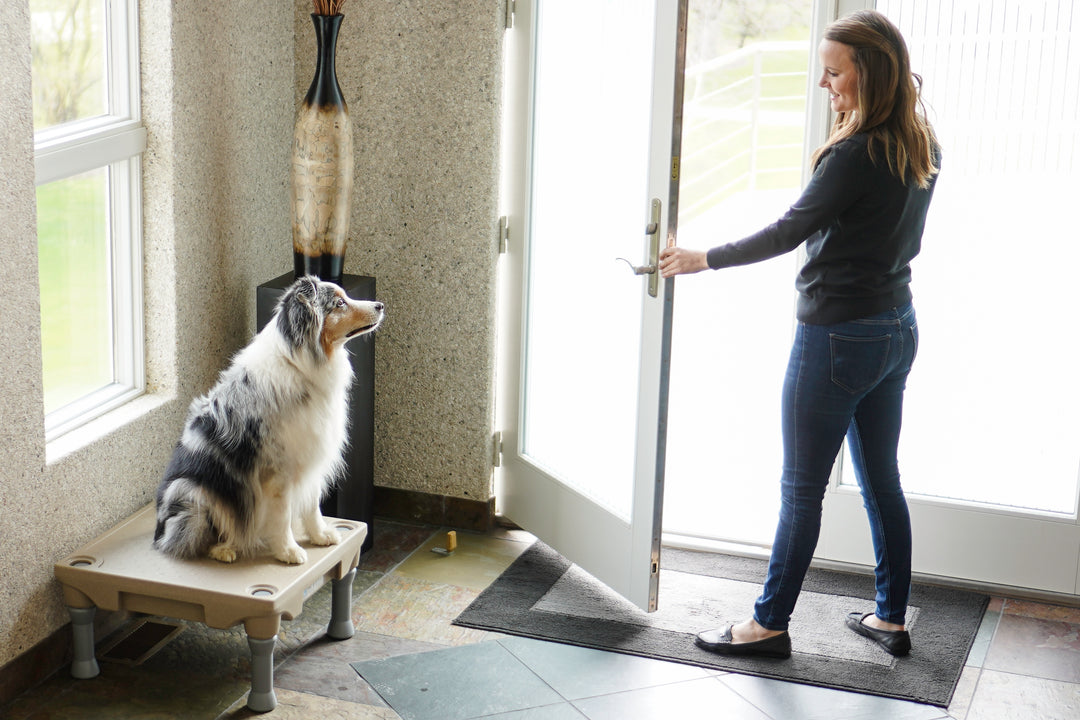Balance Harness - What The Research Says
The Balance Harness has been tested, reviewed, and involved in research on a consistent basis. The consensus is clear: the Balance Harness is the most-frequently awarded No-Pull Harness.
"The well-designed Blue-9 Pet Products Balance Harness meets all these criteria effortlessly. It earns our overall best no-pull harness award not just because of the experience myself and my colleagues have had with the harness on a wide variety of dog shapes and sizes, but because "there's a consensus among experts, including those at Whole Dog Journal, that it is at the top of the no-pull harness pack." - Business Insider
RESEARCH STUDIES
Harnesses For Agility Dogs:
"It is postulated that restrictive harnesses that cross over the bones of the front legs restrict gait by limiting shoulder extension and forelimb excursion. Some believe that this alteration in fact could potentially predispose dogs to injury, particularly shoulder tendinopathies."
This paper outlines clearly what they are referencing as restrictive and non-restrictive harnesses. An interesting find in this study is that harnesses that covered a large surface area impacted the gait significantly. “....dogs reacted most strongly to the Julius-K9 IDC Harness, which was classified as a restrictive harness, and the Dog-Games Original Fleece-Lined Harness, which was classified as non-restrictive. Interestingly, these two harnesses had the most surface area touching the dog’s bodies. In contrast, the Balance Harness, which was the most adjustable harness and also covered the least amount of the dog’s body surface area, appeared to affect gait characteristics the least.”
“In conclusion, harnesses that limit shoulder extension and restrict forelimb excursion could contribute to long-term repetitive strain and potentially predispose dogs to shoulder tendinopathies. In addition, harnesses with a large surface area in contact with the dog’s body should be avoided. These considerations should taken into account not only in working and sporting dogs but also in active companion dogs.”
Read the full paper here: https://bit.ly/3f8bOOm
Gait Restrictions Without Leash Attached
An article published in 2013 had an interesting find. Restrictive harnesses, even when not attached to a leash, impeded gait movement. “In a limited gait analysis study, Dr. Zink observed that dogs wearing no-pull, front clip harnesses bore less weight on their front legs than they normally would – even when the harness wasn’t attached to a leash! In addition, the dogs bore less weight on the leg that was on the far side of where the person walked, even when there was no leash attached; when the dog had a leash attached, it was more significant."
Read the full article here: https://www.whole-dog-journal.com/care/collars-harnesses-leashes-muzzles/the-no-pull-harness-debate/
Effects Of Restrictive And Nonrestrictive Harnesses On Shoulder Extension In Dogs At Walk And Trot
A more recent study has brought some new considerations to light. Read the full article here: https://bit.ly/3f89YgF
To Harness Or Not To Harness, That Is The Question
Read Dr. Chris Zink's thoughts on the above study here: https://bit.ly/3f7TR2L
"A non-restrictive harness needs to be fitted so that it is tight around the dog’s neck. That way, when the dog is pulling, the harness applies pressure to the manubrium (the front of the sternum), and the straps on the side of the neck do not slide back to lie against the shoulder blade. For most dogs, this means that the neck part of the harness needs to be adjustable and needs to have a clip, so that it doesn’t have to be large enough to slip over the dog’s head."
Gait Analysis: Knowing What's Right So You Can Recognize What's Wrong.
This article also helps provide background knowledge on the various methods of measuring gait.
https://www.vetsportsmedicine.com/includes/storage/brio/files/237/CR_Gait_Analysis.pdf
This paper cites: Kinematic Gait Analysis (the method used in the Lafuente study) has disadvantages including “...skin movement affects marker placement, difficult to establish consistent positioning with breed variation, [and is] technically challenging to operate.”
The study completed by Dr. Chris Zink in the “Harnesses for Agility Dogs” article uses Temporo-spatial Gait Analysis which “...determines stride and step length, [and] provides information about limb placement.” This method has fewer disadvantages than that used in the most recent study.
TOP REVIEWS FROM LEADING EXPERTS:
Business Insider
Business Insider rates: The best no-pull dog harnesses, according to professional dog trainers. https://www.businessinsider.com/best-no-pull-dog-harness Business Insider rates: The best dog harness, according to professional dog trainers https://www.businessinsider.com/best-dog-harness
Business Insider Reviews the Balance Harness: "This no-pull dog harness transforms walks from stressful to relaxed — here's how it works and why I recommend it if you struggle with leash-pulling https://www.businessinsider.com/blue-9-balance-harness-review
Whole Dog Journal
Whole Dog Journal Rates the top 12 no-pull harnesses: https://www.whole-dog-journal.com/care/the-best-dog-harnesses/
Dogster Magazine
Dogster writes: New Products for your Dog: https://www.dogster.com/lifestyle/new-dog-products-april-2020
The Doggington Post
The Doggington Post Rates The Best No-Pull Harnesses For Dogs: https://www.dogingtonpost.com/the-best-no-pull-harnesses-for-dogs/
Good Dogs Co
Good Dogs Co rates the 15 Best Dog Harnesses: https://gooddogsco.com/best-dog-harness/#product-5
ChatterSource
Chatter Source Rate the Best No Pull Harnesses: https://www.chattersource.com/article/no-pull-dog-harnesses


